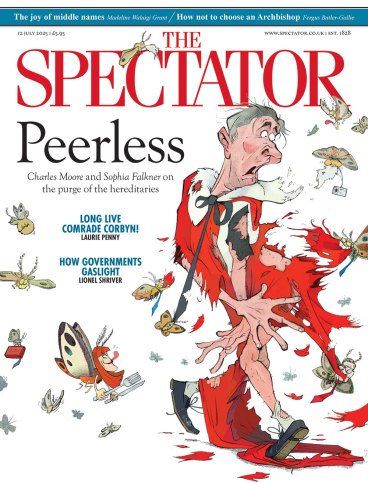
Sometime after the Long Parliament met in November 1640, a seamstress living in London called Katherine Chidley decided that she didn’t much like the way that a man was telling her how to do her Puritanism. So, taking advantage of the recent collapse in traditional censorship controls, she published a pamphlet, The Justification of the Independant Churches of Christ (1641), which challenged the writings of Thomas Edwards, a preacher, heresiographer and polemical hardman of English Presbyterianism. Over the course of 80 tightly printed pages, Chidley contended that Edwards’s religious vision was an authoritarian and sexist misreading of God’s plans for his people. Churches could gather as and where they pleased; they didn’t need a hierarchical system of elders; and a husband had no authority over his wife’s conscience.
With Chidley’s name proudly emblazoned on the title page, this work of religious controversy by a non-aristocratic autodidact was a landmark moment in the history of women’s writing in English. Some of Edwards’s male contemporaries conceived of it rather differently: they thought that Chidley was just ‘spetting [spitting] in his face’.
The pamphlet is discussed briefly – and its title page reproduced – in Jonathan Healey’s compelling account of the months preceding the outbreak of the English Civil War. He sees its publication as evidence of a ‘new temper taking hold’ in British politico-religious affairs in the months spanning spring 1641 and early summer 1642 – a period when the structures underpinning church and state were violently contested in pulpit, parliament, print and the streets.
Healey’s narrative is bookended by familiar episodes: the execution of one of the architects of Charles I’s decade-long experiment in prerogative government, Thomas Wentworth, 1st Earl of Strafford, in May 1641, and the raising of the royal standard at Nottingham in August 1642, effectively declaring war.
Its narrative climax is Charles I’s attempt to arrest five members of the House of Commons – John Pym, Denzil Holles, John Hampden, Arthur Haselrig and William Strode – on charges of treason while it was sitting in session in January 1642, an event widely regarded as Caroline statecraft at its absolutist worst. Healey emphasises that the episode also drove a widespread lack of trust in the King and his advisers.
The House of Commons in
January 1642 saw Caroline statecraft at its absolutist worst
The tight chronological focus of the book is used to show how ‘nations can collapse with alarming speed in the face of constitutional crisis’. It also enables the author to linger over archival details in order to give a relatively familiar narrative startling freshness. The anxiety besetting the King’s entourage after his attempt on the five members is concentrated at one point on the Elector Palatine’s lost set of keys to Whitehall palace. The enduring importance of Cavalier style, as well as the extremity of the King’s cause after parliament’s passing of the Militia Ordinance (which effectively transferred defensive military power from the king to parliament), are emblematised by Queen Henrietta Maria’s need to sell some of Charles’s pearl buttons in the Hague. ‘You cannot imagine how handsome the buttons were,’ she lamented to a correspondent as the nation inched towards war.
Chiefly, though, this compressed timeline gives Healey a workable chronological frame in which he expertly blends two very different historiographical traditions used to explain the origins of the English Civil War. The first of these, aristocratic in emphasis, reprises aspects of John Adamson’s magisterial The Noble Revolt (2007) to demonstrate how a group of radical peers – headed by Robert Rich, 2nd Earl of Warwick, and Francis Russell, 4th Earl of Bedford – worked together to thwart the King’s attempts to consolidate and enforce an authoritarian monarchical order.
The second, drawing on Healey’s rich sense of popular radicalism in the period, focuses on the responses of Charles’s non-aristocratic subjects to his rule, and how the technology of cheap print enabled them to associate, debate and engage in meaningful political action on their own terms in the form of pamphlets, newsbooks (reporting on domestic politics for the first time) and printed petitions.
Thus, alongside figures such as Chidley, Healey draws attention to the ginger-haired ironmonger-turned-pamphleteer Henry Walker, who, during the Five Members controversy, threw a copy of an anti-tyrannical tract into the royal coach, much to the King’s fury. Healey sees the incident as instrumental in driving Charles from the capital, a momentous step towards civil war. It also leads him to conclude that ‘this was a people’s revolution as well as a noble revolt’.
Its commitment to a twin historiographical tradition is one of the standout features of this fine, engaging and judicious book. It can also be glimpsed in its illustrations. Alongside the luminous portraits of vulpine politicians and weak-chinned aristocrats that typically adorn modern accounts of the 17th century, there are splendid reproductions of the title pages – essentially advertising materials – of some of the cheaply printed books that prompted early moderns to take their positions in the coming conflict.








Comments